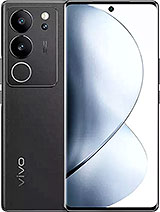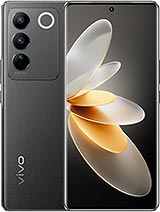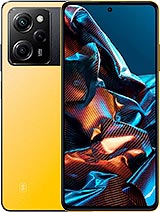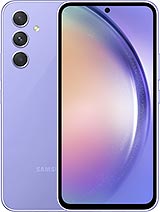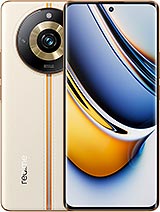vivo V29 Pro review

Funtouch 13 on top of Android 13
Just like the V27 family before them, the V29 Pro and V29 run Funtouch 13 on top of Android 13. Vivo did discuss its update and support policy regarding the V29. We can only assume that said information applies to the V29 Pro as well, which means that owners can expect two major Android updates and three years of security fixes. It's not the most generous update policy ever, but it's not too bad.

Funtouch 13 remains an experience relatively detached from 'stock' Android, but not necessarily in a bad way.





Lockscreen • Homescreen • Folder view • Settings menu
One of the useful proprietary features can be found in the recent apps menu. You can choose between the standard carousel formation and a horizontal tiles layout - sort of like MIUI, only scrollable horizontally. The setting is available right then and there - you don't need to look for it in the menus.




Recent apps • Recent apps • Pop-up • Spilt screen
The notification shade is familiar, and Funtouch is staying away from Google's large bubble-style quick toggles - it's simple circular buttons here. The default accent color is blue and can be controlled via the Android 13 AOSP color palette interface. A powerful theming engine is still present.

The app drawer has an expandable recommended apps category on the top (most commonly used ones), whereas using the vertical scroller on the right would highlight the apps beginning with the selected letter.





Notification shade • Quick toggles • App drawer • Scroll by letter • Widgets next to the app drawer
The rest of the UI has plenty of non-stock bits. In the Dynamic Effects sub-menu, vivo has grouped a bunch of customization options for the home screen, lock screen and animation effects. There are even various charging and facial recognition animations.
The always-on display settings are in a different sub-menu, but the phone still gives you plenty of options to tinker with - a wide selection of animations, clock styles, colors, and backgrounds.
Just like Samsung and its OneUI, Funtouch takes care of people with hearing problems, and you can calibrate the sound to be heard by elderly people or those with impaired hearing. Additionally, notifications and calls get separate volume sliders. The vibration intensity can be adjusted for calls and notifications independently. There is a system-wide audio equalizer of sorts, though it only has presents and no sliders to adjust. An Audio Super Resolution toggle is thrown into the mix.
The Smart motion menu holds a handful of familiar screen-on and screen-off gestures along with some new additions.
Holding the volume down key can be used to launch an app or do a certain task, although the list is limited to the camera app, turning on/off the torch, starting recording audio, open Facebook, or opening any custom app. The so-called Quick action feature doesn't work when playing music for obvious reasons. There still isn't a double-press option for Quick action, though.






Smart motion menu • Shortcuts and accessibility • Quick action • S-capture • Split-screen • Easy Touch
A dedicated Ultra Game Mode is available, and it has it all. Most of the features are about mitigating disturbance during gameplay or preventing certain apps from displaying notifications. One of the most intriguing features that have been around on vivo phones for a while is the ability to turn off the screen and keep the game running in the background. Especially useful for turn-based games or those requiring some sort of "farming" or "grinding".
The Funtouch launcher also offers its own gallery, audio and video players, and system manager. There is also a dedicated Themes app and an iManager app with various system tools.






Albums • Video • Music • Manager • Manager • Themes
Performance and benchmarks
For one reason or another, vivo decided not to change the chipset going from the V27 Pro to the V29 Pro. It still runs on the MediaTek Dimensity 8200 - a premium midrange chip aimed to bring flagship-grade performance on non-flagship smartphones.

The Dimensity 8200 is an overclocked version of the Dimensity 8000 chip, but it is built on the 4 nm process technology and comes with HyperEngine 6.0, which supports Vulkan (though not the full-featured API) for raytracing in gaming, FPS improvement and smart resource optimization.
HyperEngine is a set of features dedicated to improving smartphone gaming performance in the flagship-killer territory. The Dimensity 8200 also comes with improved camera support over the Dimensity 8000 thanks to the Imagiq 785 ISP.
The Dimensity 8200 has an octa-core CPU configuration consisting of one big Cortex-A78 core, clocked at up to 3.1 GHz, three more Cortex A78 ones, working at up to 3.0 GHz and four Cortex-A55 cores, capped at 2.0 GHz. On the GPU side of things, we have the Mali-G610 MC6. All of this is paired with LPDDR5X RAM and UFS3.1 storage in the V29 Pro. Our review unit has 12GB of RAM and 256GB of storage. However, a lesser version with 8GB of physical RAM and the same amount of storage also exists.
Let's kick things off with some CPU tests and Geekbench. Here, the Dimensity 8200 is clearly showing its midrange prowess. It ends up being basically unmatched in the multi-core test and only slightly bested by the likes of the Snapdragon 7+ Gen 2.
The Poco F5 rocking the aforementioned Qualcomm chip continues to be sort of an anomaly in terms of value for performance and remains hard to beat.
AnTuTu is a much more compound benchmark that also includes GPU testing as well as scores for memory, among other things. It is very favorable towards the vivo V29 Pro.
While pretty decent in the grand scheme of things, the Mali-G610 MC6 GPU setup inside the Dimensity 8200 isn't quite as impressive as the CPU. For some reason, the V29 Pro consistently underperforms compared to the vivo V27 Pro in offscreen testing, which is odd, given that these should be independent of display resolution and always render at 1080p. We did doublecheck the scores, so perhaps it is some compatibility issue with the benchmark.
As for on-screen GPU performance, it is worth remembering that the vivo V29 Pro is rocking a 1260 x 2800-pixel display - higher resolution than most FullHD+ phones in the running, and that's a fact that puts extra strain on the GPU at native resolutions.
Historically, 3Dmark tends to offer more comparable and consistent GPU benchmark numbers than GFXBench, and we are happy to report that the Mali-G610 MC6 inside the V29 Pro performs as expected and up to speed with the one inside the V27 Pro in this test.
Still, if a more potent GPU for gaming is what you are after, the likes of Google's Tensor G2 ship inside the Pixel 7 and the Snapdragon 7+ Gen 2 inside the Poco F5 seem to offer better overall performance within this price range.
From a more practical standpoint, we are happy to report that the vivo V29 Pro is not strapped for power. Its Funtouch OS runs perfectly smooth with practically no hiccups, and the phone easily chews through any daily task. Gaming is also a perfectly feasible and enjoyable activity on the V29 Pro. Even some of the heavier games available on Android are not a problem. Overall, we can understand vivo's decision to stick with the Dimensity 8200 chipset for another generation of phones.
The V29 Pro doesn't really get too hot in terms of surface temperature. It gets warm for sure, but never uncomfortable to hold. Unfortunately, the Dimensity 8200 chipset gets toasty quickly and tends to thermal-throttle rather aggressively.
On a positive note, at least we didn't observe any sudden drops down in performance that could result in stutters in game.
Reader comments
- Pravin
- 02 Mar 2024
- 7{L
E sim and NFC is not supportive which i felt personally dislike to buy or recommend to any one not worth buying.
- Lord Mat
- 24 Dec 2023
- TXu
I doubt many/most of the comments here are genuine. "Screen breaks after one day"...? Unfortunate that this section has become mostly useless.
- Anonymous
- 26 Nov 2023
- DkE
Seriously. How























